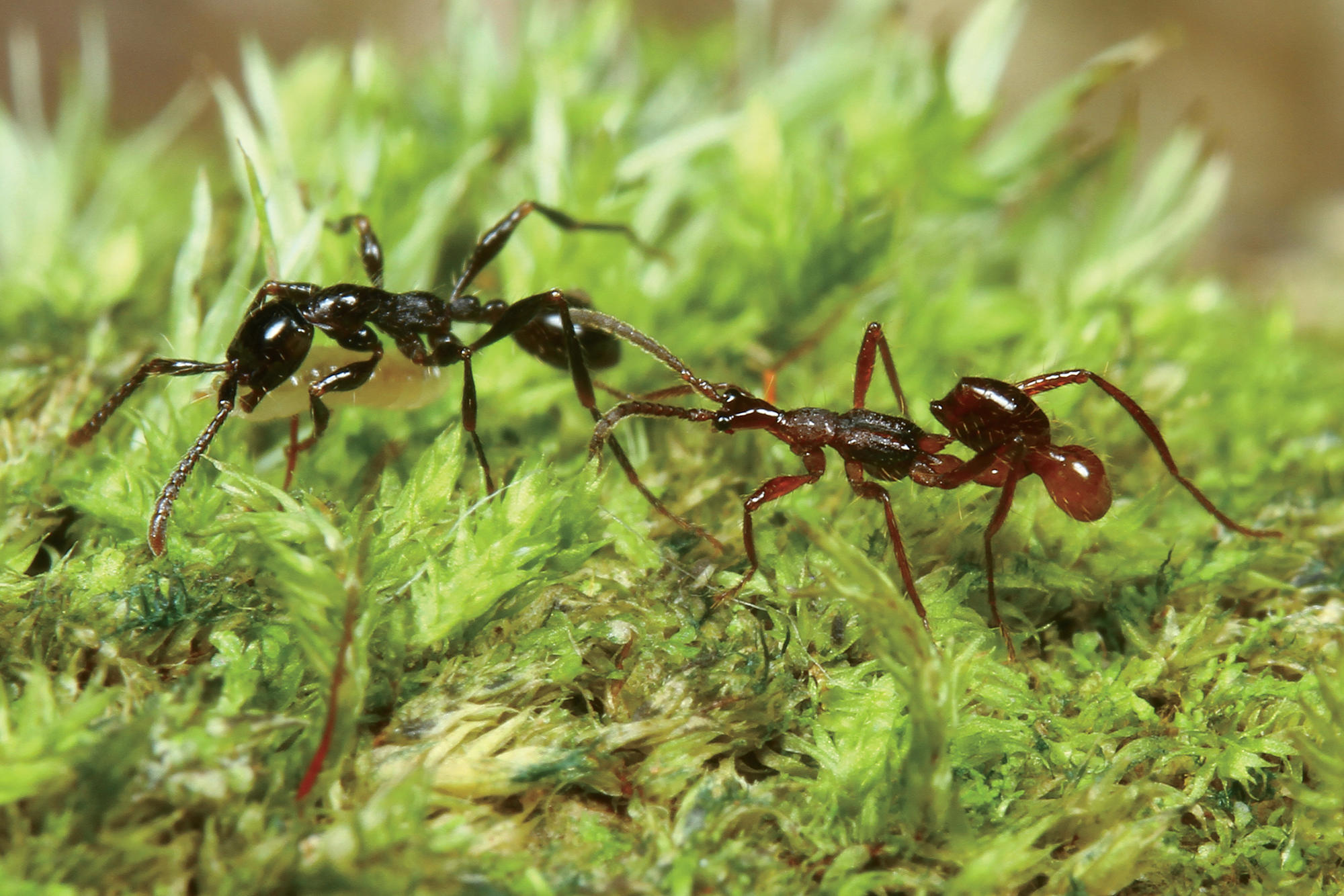Question: What looks like an ant, acts like an ant, smells like an ant, and yet is not an ant?
Answer: A rare beetle that has evolved to mimic an ant so convincingly, down to the pheromones it secretes, that it can live inside an ant colony even as it eats the ants’ eggs.
“There is nothing else quite like this in all of nature,” says Joseph Parker, a Columbia postdoctoral researcher who studies the insects. “These beetles, which are members of the rove-beetle family, no longer bear any resemblance to their own relatives. Instead, they have the narrow waists, long legs, and chemical-signaling mechanisms of the ants they prey upon.”
To understand how these remarkable creatures evolved, Parker and Munetoshi Maruyama, a biologist at Japan’s Kyushu University, have spent the past ten years collecting specimens from rainforests around the world and then analyzing their DNA. By constructing a family tree of 180 species of rove beetles — only a small number of which resemble and live among ants — they have discovered that multiple species have evolved ant-like characteristics independently of one another over the past hundred million years. They say that this is one of the most dramatic examples ever documented of what biologists call convergent evolution — when different species respond to a challenge in their environment with the same adaptation.
“One of the main challenge for rove beetles living in tropical rainforests has always been surviving in the vicinity of enormous colonies of aggressive, marauding army ants,” says Parker, whose paper appears in the journal Current Biology. “Many beetles have stumbled upon the same unlikely strategy: rushing headlong into the danger, infiltrating the ant colonies and feasting on their brood.”
There is much that scientists still do not know about ant-mimicking rove beetles: Do they live their entire lives inside ant colonies or come and go? Do ants ever discover their ploy and kill them? Do ants benefit somehow from the beetles’ presence?
“It’s extremely difficult to observe these guys interacting in nature, because in most colonies the ants outnumber the beetles by about five thousand to one,” says Parker. “On the rare occasion you spot a beetle among them, you usually grab it immediately, because you don’t want to lose sight of it and miss your chance to collect a new specimen.”
Nor is it feasible to transplant ant colonies into a laboratory. “Army ants live in such large and socially complex communities that when you capture some of them and put them in the lab, they don’t act naturally,” Parker says. “When scientists have tried, the ants have died within a few days.”
Parker and Maruyama hope that further analysis of the beetle specimens they have collected, many of which are new to science, will yield additional insights.
“Many of these beetles have special glands in their abdomens, and one hypothesis we’re exploring is that they excrete something that is nutritious for the ants,” says Parker, who notes that ants can sometimes be seen licking the beetles’ midsections. “If this is true, it would suggest that the ants are getting something valuable out of this arrangement, too — that they’re not necessarily the dupes they appear to be.”



